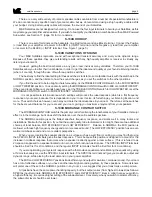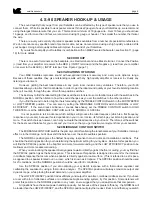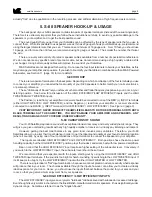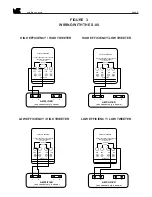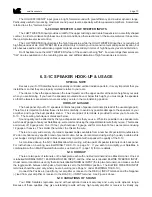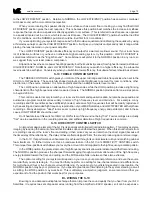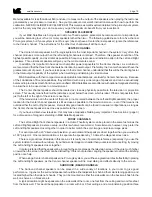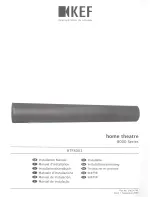
satellite speakers
page 3
1. INTRODUCTION
Congratulations! Your new M&K Satellite speaker system will give you years of unmatched enjoyment and
excitement while listening to your favorite musical and audio/video sources.
We encourage you to read this owner’s manual, as there is a great deal of information provided here to help you
achieve the best possible performance.
If you have any questions about your speaker system, please contact your M&K dealer or call the M&K factory
directly at (310) 204-2854, from 8:30 AM to 5:00 PM Pacific Time, Monday through Friday. We will be happy to help
you with any question, no matter how simple or complex it may be.
This manual gives you basic hook-up instructions first, followed by more detailed technical, installation, and
service information. For specific hook-up and usage information, please find the section that refers to your Satellite
model. For the S-100B, see page 3; for the S-90; page 6, for the S-80; page 8; and for the S-1C, page 10.
2. PLACEMENT OF YOUR SATELLITE SPEAKERS
Your M&K Satellites can be installed in a wide variety of locations. Their compact size gives you great flexibility
in installation. They can be placed on stands, shelves, or bookcases, or more permanently mounted using brackets,
direct attachment to a wall, or a ceiling suspension system.
If you do wish to mount your Satellites permanently using wood screws, their cabinet thickness is 3/4". Be sure
to use hardware shorter than 3/4" in length to avoid making a hole in the sealed cabinet that would adversely affect its
sound quality.
You can place the Satellites virtually anywhere in the room, but certain locations are better than others. In general,
locate them away from obstructions that would interfere with the direct path from the speakers to your ears (such as
walls, furniture, lighting, plants, etc.). They will sound better when they are around ear height, or when angled towards
your favorite listening location. In general, they sound best when they are not sitting directly on the floor.
M&K speaker stands are designed to set M&K Satellite speakers at the right height for the average person and
chair, and they also allow you to use spiked feet and to add mass to the stand to improve the Satellites' sound (by filling
the stand upright with sand or buckshot, etc.). Your M&K dealer has more information on these stands.
The S-100B, S-90, and S-80s can be used with OmniMount
®
Systems brackets, without the use of wood screws,
because their cabinets have integral threaded hardware in patterns for OmniMount
®
brackets. These brackets offer
tremendous flexibility for installation in a wide variety of environments. For more information, see Section 14 (page 19),
or contact OmniMount
®
at (602) 829-8000.
For more detailed information on placement of your speakers, see Section 7 (page 13).
SPECIAL NOTE - TV SHIELDED SATELLITE SPEAKERS
If you place your Satellite speakers close to a television set (about 2 feet), the speaker magnets may cause
distortion of the television's picture. For these applications, M&K makes special TV Shielded versions of the S-100B,
S-90, and S-80. The S-1C is made only in a shielded version. Shielded Satellites are identified by markings on the
shipping carton and by a label on the back panel of the speaker. Unless your Satellites are Shielded, allow 2 - 3 feet
of clearance around any television.
If you do own a pair of Shielded Satellites, please note that in some installations, a small amount of residual
magnetism may cause a slight geometric or color distortion of the picture on your television set. If you do get this
distortion, try moving the Satellite speaker slightly until the problem disappears. If you have difficulty solving any
magnetic problems, please contact the M&K factory.
3. S-100B SPEAKER HOOK-UP & USAGE
The sound quality that you get from your Satellites can be affected by the type of speaker wire that you use to
connect them. While it is possible to use speaker wire as thin as 22 gauge to hook your Satellites up, we recommend
using the largest diameter wire that you can. This means a minimum of 18 gauge wire. Over 10 feet, you should use
16 gauge, and for more than 30 feet, we recommend using 14 gauge or heavier. The smaller the number, the thicker
the wire.




